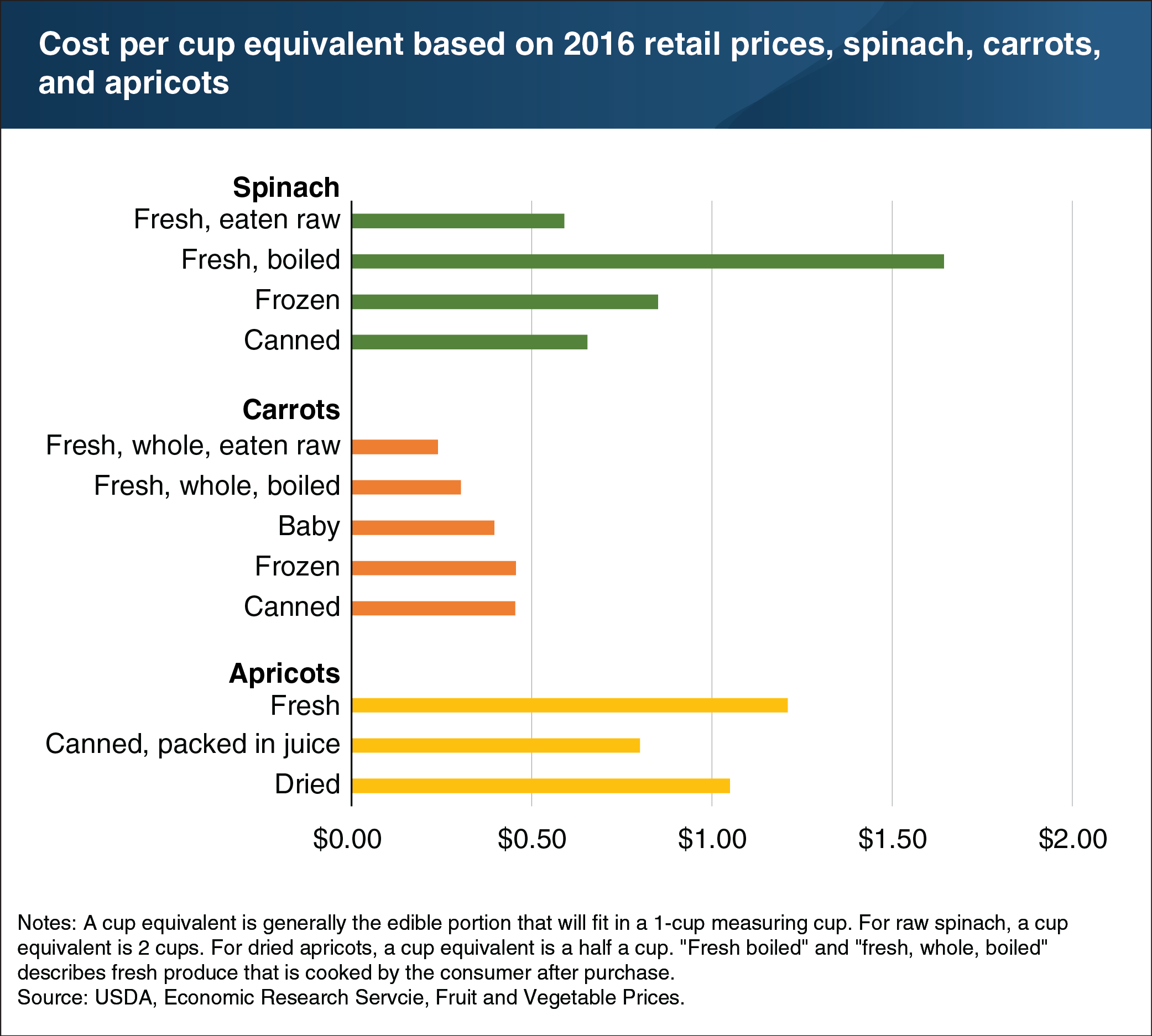Fruit and vegetable costs vary by product and form
- by Hayden Stewart
- 11/28/2018

At the grocery store, fruits and vegetables are sold in many forms, including canned, frozen, dried, juiced, and fresh products. However, which forms are less expensive? ERS researchers estimated average retail prices paid in 2016 for 24 fresh fruits, 40 fresh vegetables, and 90 processed fruits and vegetables, measured in cup equivalents. A cup equivalent is generally the edible portion that will fit in a 1-cup measuring cup; for raw leafy vegetables, a cup equivalent is 2 cups, and for raisins and other dried fruits, it is one-half cup. As seen in the examples of spinach, carrots, and apricots, neither fresh nor processed forms turn out to be consistently less expensive to consume across fruit/vegetable types. For instance, spinach is more expensive in its fresh, boiled form than when frozen or canned, while carrots are less expensive in fresh, boiled form than when frozen or canned. Relative retail prices may reflect the different prices received by growers, as well as differences in processing, handling, and spoilage costs, which vary by form and product. This chart is based on the Fruit and Vegetable Prices on the ERS website.

